We’ve been in various stages of COVID lockdown for over a year now, and if you’re like me, your at-home coffee consumption has increased significantly over that time. Everything but espresso.
Making café-quality espresso at home is the pinnacle of home bar capabilities. The feeling of making the perfect shot—or as close as you can get—is an unparalleled experience that even making an incredible pour-over can’t beat (at least in my humble opinion). But beyond the many, many variables a home barista must consider when chasing a God shot, there’s one factor that’s keeping espresso from making its way into more people’s homes: Coffee machines are damn exorbitant.
When it comes to upgrading your at-home coffee experience, it’s a lot easier to buy a modern $50 espresso machine than it is to spend $1,000-plus on an espresso machine (and often a lot more). Don’t get me wrong, we at Sprudge love the Linea Mini, but buying one is a full-blown commitment to not only making espresso now but for years to come; an Italian-made, home-made, professional espresso machine isn’t a pandemic-proof purchase, it’s a lifestyle choice.
Fortunately, there’s a third way. For those willing to put in the effort, there are manual espresso machine options that offer cafe-level espresso—crema and all—at an affordable price (read: affordable compared to customary semi-automatic and automatic home espresso machines). These machines come in all shapes and sizes and apply a variety of ingenious methods of generating pressure for the coveted nine bars needed for “real espresso.” We’ve rounded up seven of our favorites—and a few honorable mentions—with options for every budget.
Mini presso
For many people, manual espresso is not so much a matter of how it can be made, but where. Whether at work, on the go, or on an outdoor adventure, when espresso is a must, a portable espresso machine is a must. Mini presso By Wacaco might be just the ticket for those times. Along with its even smaller counterpart, the Nanpresso, the Minipresso offers espresso that can be taken anywhere, thanks to its slim profile and piston-driven design. And for a very reasonable $50, it offers a great entry point into the manual market.
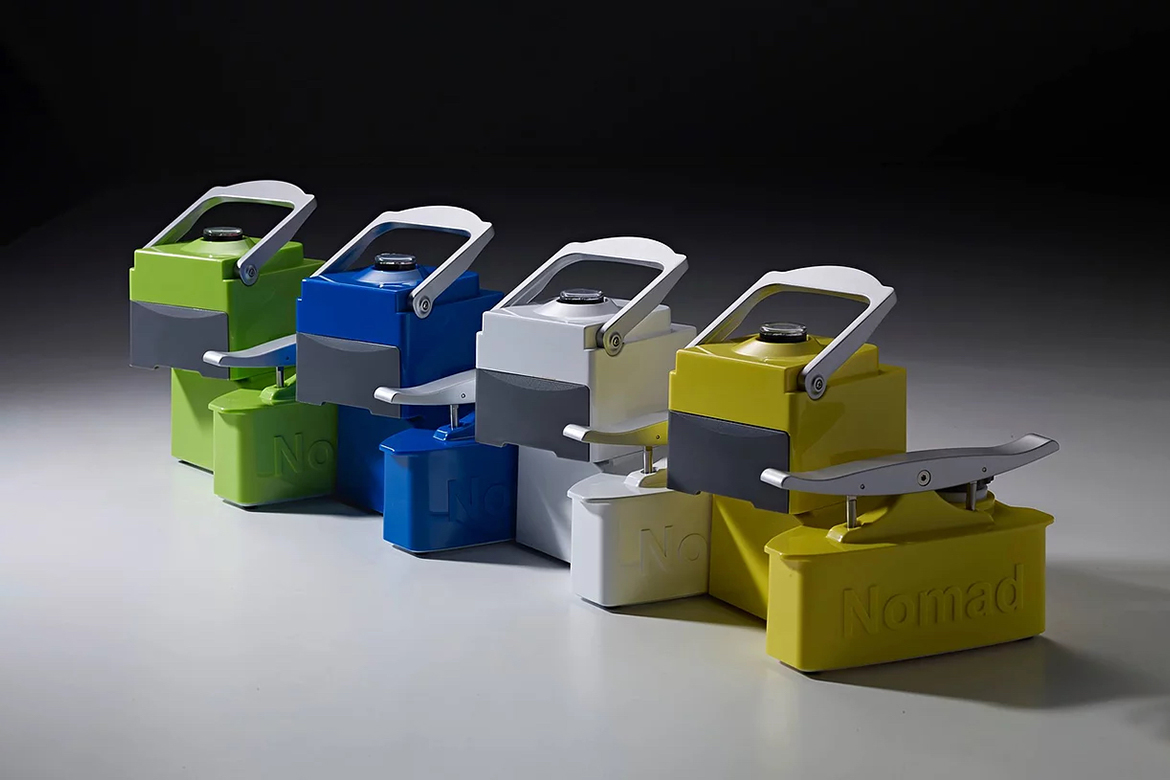
Nomad UniTerra
Portability can be a bit subjective. What I might consider to be carry-around-the-counter crema might not pass muster for you. That particular gray area is where I live Nomad UniTerra. While not completely unportable, the Nomad looks like a scaled-down espresso machine in a range of very fun colors. The manual-pump machine offers pressure control through variable pump speeds and the True Crema Valve, a patented design that helps “compensate for grounds and tamp variances.” Retailing for $295 — though currently available for $235 — the design is aesthetically pleasing and minimalist enough to deserve a spot on your kitchen counter, even if its portability is a question.
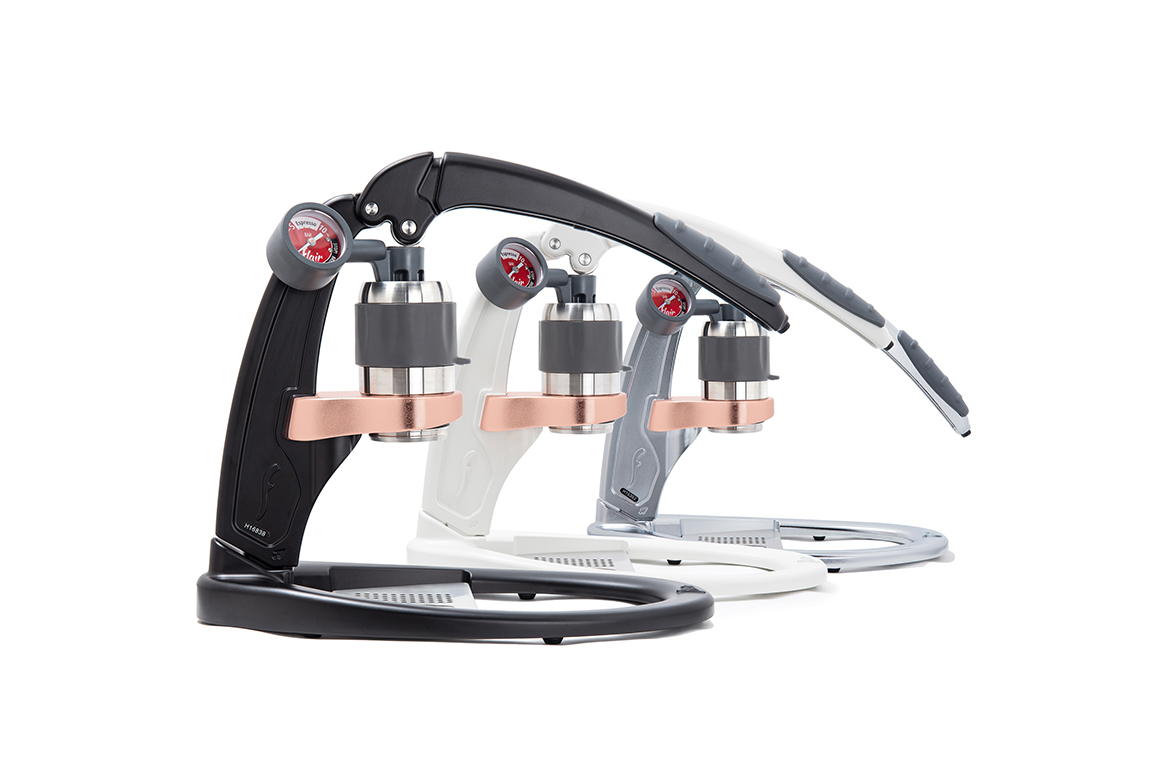
Espresso Flair
Handheld and portable are not always synonymous with coffee machines, and Talent is proof of that. The countertop lever espresso machine is a little Jetsons-esque, mid-20th-century contemporary for your kitchen. But it’s not just about looks. The Flair has the power to make really, really good espresso without the need for electricity. Pricing options range from $119 for the Neo all the way up to $529 for the Flair 58, their latest and greatest (now on pre-order).
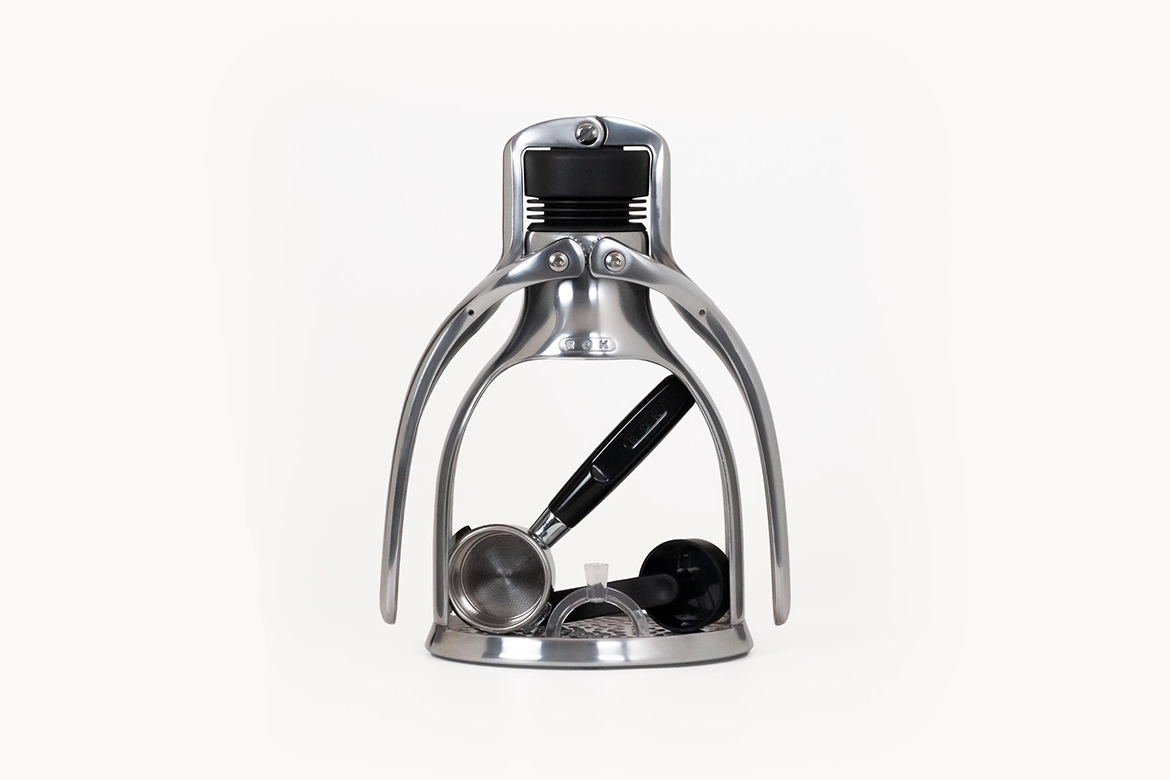
Rock espresso
Cut from the same cloth as Flair Year (stylized ROK.) A countertop coffee maker also relies on human force to generate pressure, but the Rok uses a two-arm design — like squeezing a pair of hedge trimmers — as opposed to the more customary single lever. The Rok starts at $189 for just the coffee maker, but complete kits, with a manual grinder and all, can be had for $418.
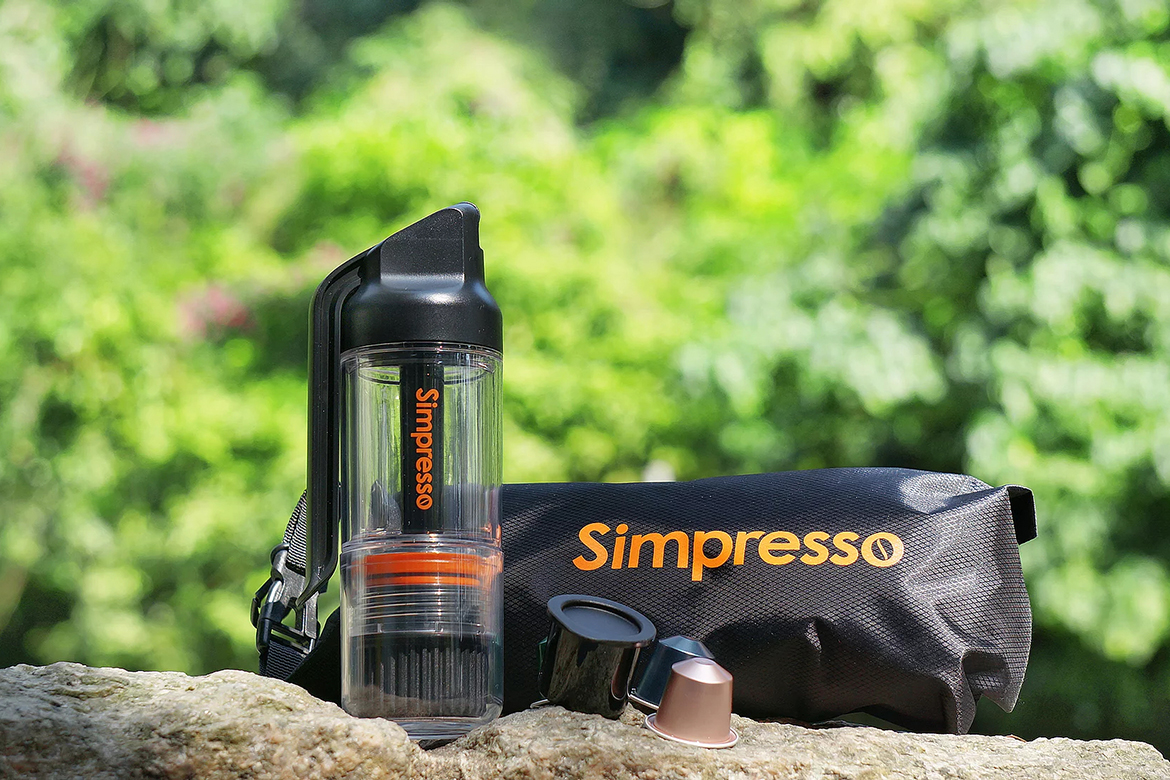
Simpresso
With Minipresso, Simpresso is among the most portable espresso machines on the market. The Simpresso uses pump power to reach up to 20 bar of pressure. And for ultimate — if slightly less environmentally cordial — convenience, it also comes with an adapter that allows the Simpresso to apply Nespresso capsules. The full premium travel kit costs $70 and is a lightweight addition to any travel backpack.
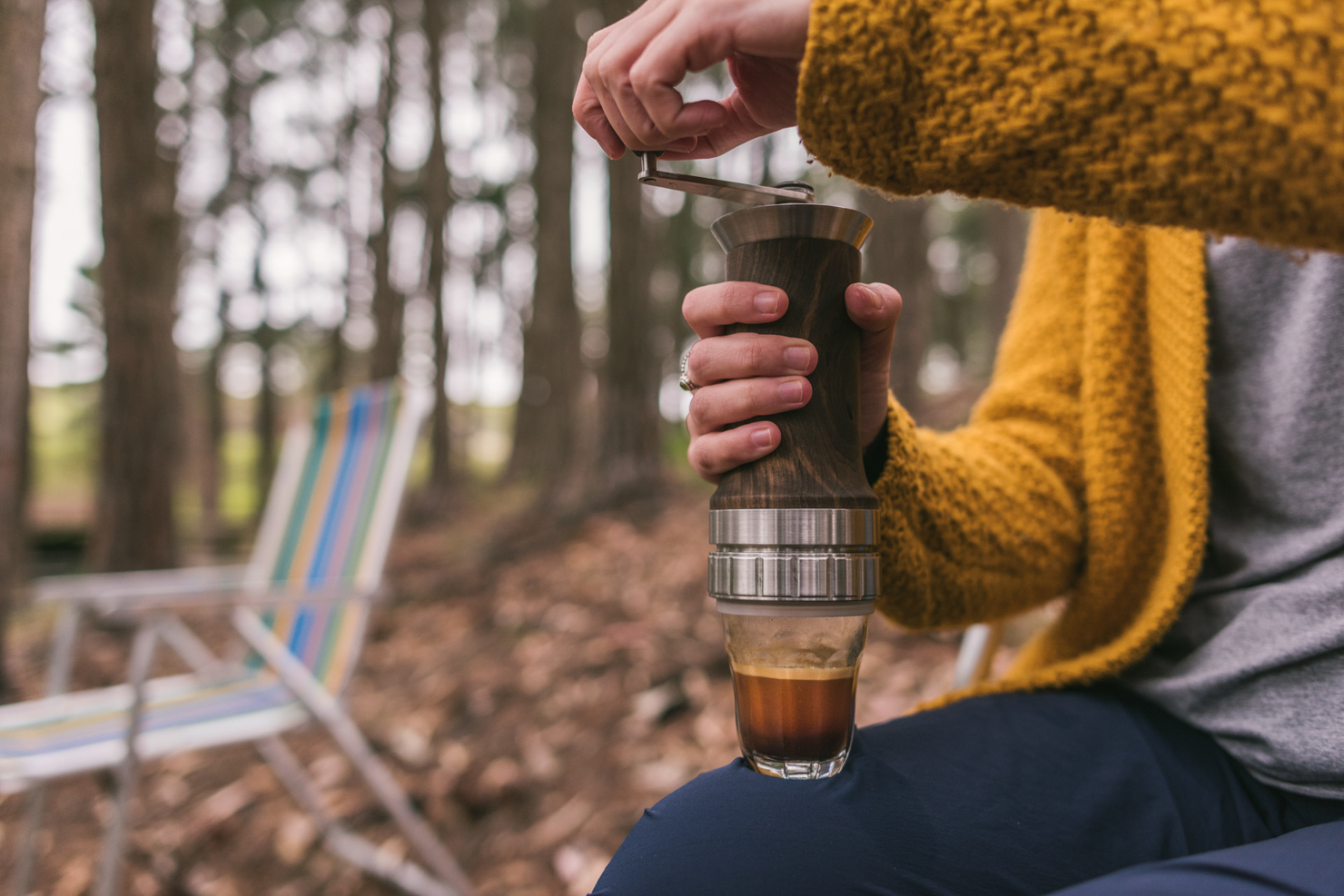
Aram
Perhaps the most lovely of the manual coffee machines, Aram combines portability with a stunning counterpoint. Handcrafted in Brazil, the Aram resembles a manual grinder and offers a modern approach to creating pressure. With a threaded crank, you create pressure similar to how you would apply a manual grinder, turning the handle to build pressure before releasing it into the coffee chamber. The Aram is miniature enough to pack for travel, but good enough to otherwise leave on the counter in its optional stand. Retailing for just under $500, a true dual-purpose coffee maker is a bit of an investment, but very much worth it for those willing to take the risk.

Xbar
The latest edition of the manual espresso canon is Xbar. We learned about the Xbar via a Kickstarter campaign that raised nearly $100,000 against a goal of just $5,000. While the Xbar is compact enough to travel with, it seems better suited for home apply, where its miniature size will be a welcome addition to any countertop. What makes the Xbar so stimulating is that it’s introduced not one, but two modern ways to get that much-needed nine bar of pressure. The Xbar, which can be used with either a gas cartridge or by connecting an air pump directly to the built-in Schrader valve, is capable of reaching up to 12 bar of pressure. And with a variety of controls, users can even profile the pressure of their espresso shots. The Xbar is set to retail for $300, but special Kickstarter deals under $200 are still available.
Distinction:
Moka Pot
While it technically can’t make “real” espresso, no conversation about a richer, thicker version of coffee at home is complete without a nod to the one who started it all, the Moka Pot. The kitchen infuser is beloved around the world, especially in Italy where it was created, and until the last few decades was the only real way to get something close to espresso at home. They’re affordable, hard-wearing, and timeless. It may no longer be the best way to make espresso at home, but no coffee collection is complete without one.
AeroPress
Independently, AeroPress It can’t make espresso. It can come close and make a lot of great filter coffee drinks. Fortunately, there are a lot of additional accessories on the market, such as Scholarship holder’s Prismothis Joepressoand Stand—over the past few years, which bridge the gap and allow the AeroPress to achieve true crema. If you already have an AeroPress at home, one of these add-ons may be the only thing holding you back from making espresso at home.
Mypressi Twist
The inclusion of the Mypressi Twist was hotly debated in the Sprudge offices. Yes, it can make espresso. No, the company is no longer in business. Hence the conundrum. There are still a few gray-market Mypressi floating around cyberspace, but we can’t in good faith give a full recommendation to buy one. Sounds like a good way to lose an eye. Caveat emptor.
